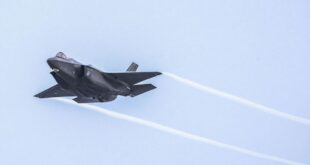Having announced that their V2 will become part of the Graham Farish range, Bachmann has offered a taste of what’s to come from this Autumn’s British Railway Announcements.
On Tuesday 6 August, they displayed brand new 00 gauge models of the NAA Propelling Control Vehicle (PCV), which is part of its EFE Rail range.
The initial PCVs were constructed in 1993 when British Rail aimed to enhance mail train efficiencies by eliminating the need for multiple locomotives at Royal Mail hubs, especially the upcoming Railnet Hub at Willesden.
These were created by repurposing surplus driver cars from Class 307 Electric Multiple Units (EMUs), initially earmarked for transformation into dedicated parcel units.
The Railway Technical Centre in Derby converted two prototypes, and after thorough testing, Hunslet-Barclay produced an additional 41 PCVs between 1994 and 1996.
Conversion work included the refurbishment of the cab, removal of the passenger saloon interiors and plating of the body sides, with two roller shutter doors on each side to allow mail and parcels to be loaded and unloaded. RCH push-pull equipment was fitted, and the PCVs entered traffic working with GUVs and BGs and hauled by locomotives such as Class 47s and Class 90s.
Once a terminal was reached, the driver could control the locomotive from the PCV cab to release the train from a siding or buffer stop.
The entire fleet was allocated to Rail Express Systems and passed into EWS ownership in 1996 before the vehicles were effectively made redundant at the end of 2003 with the end of EWS-operated Royal Mail services with the class 325 electric units taking over services outright under new ownership until this coming October.
The EFE Rail model accurately replicates the PCV at a 4mm scale, serving as an ideal complement to the Rail Express Systems models previously produced in OO by Bachmann Branchline.
The intricate body shell includes individual jumper cables and windscreen wipers at the cab end, along with separately added handrails, lamp brackets, and ETH connections.
The B5 bogies are detailed with brake and suspension components, and the cab-end bogie is equipped with a speedometer, featuring a representation of the cable connecting it to the solebar. Additional underframe components, such as battery boxes and brake gear, are separately attached below the solebar.
The PCV features functional lighting, with directional lights at the cab end that switch between day and night modes using the underframe-mounted switches.
On DCC systems, the lighting is managed through a Next 18 DCC Decoder. Access to the decoder’s socket requires removing the body shell. DCC operators can also activate a cab light and manage the directional lights and their modes using specific functions.
Power is collected through electrical pickups attached to each wheel, and the couplings are tension locks, which fit into NEM pockets connected to chassis-mounted close-coupling mechanisms. Additionally, brake pipes and dummy buckeye couplings are provided for an optional attachment to each buffer beam.



